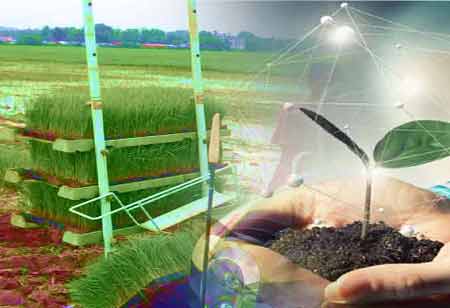Thank you for Subscribing to Agri Business Review Weekly Brief
Importance Of Aquaculture
Aquaculture is the process of cultivating aquatic organisms, especially for human consumption

By
Agri Business Review | Monday, October 31, 2022
Stay ahead of the industry with exclusive feature stories on the top companies, expert insights and the latest news delivered straight to your inbox. Subscribe today.
Aquaculture can happen worldwide, and it does: in coastal ocean waters, freshwater ponds also, rivers, and also on land in tanks.
FREMONT, CA: Aquaculture is the process of cultivating aquatic organisms, especially for human consumption. It's similar to agriculture, but with fish rather than plants or livestock. Aquaculture is also called fish farming.
The seafood you find at your local grocery store is possibly labeled farmed fish. Aquaculture can happen worldwide, and it does: in coastal ocean waters, freshwater ponds also, rivers, and also on land in tanks.
How does it work?
The ways of aquaculture's farm-to-table process can vary from species to species. Usually, there are four stages of the production chain, beginning in hatcheries and closing at the seafood counter in your grocery store.
Each stage can vary concerning its impact on the environment and the quality and security of the seafood they produce. Consequently, the Global Seafood Alliance administers the BAP(Best Aquaculture Practices) third-party certification program.
Previously, fish farms have had issues concerning these four elements of aquaculture, and BAP seeks to enhance the fish farming industry across the globe.
The first step in the aquaculture production chain is the incubator. This is where fish breeding, hatching eggs, and rearing fish through the early life stages happen. Once the animals are sufficiently mature, they are sent to the farm, where they are raised to harvest size through feed produced at feed mills (another level of aquaculture).
The fish are then shipped to a processing facility, packaged and sent to food retailers and grocery stores. That's where you come in.
Why is it important?
Since overfishing of our oceans and other natural resources continuously increase yearly, humans need alternate seafood sources to feed the planet's ever-growing population. "Regrettably, the days of the ocean's natural productivity offering for the planet are over. Wild fish have been abused for generations.
Some estimate that the yearly catch of edible marine protein has already gone its peak. As a result, the oceans cannot naturally offer the demand for seafood" (Positive Aquaculture Awareness). Aquaculture is the means to fill in the gap in the seafood supply. Farming fish reliably and sustainably is the solution to giving future generations access to healthy and eco-friendly protein options.
Not just is aquaculture necessary, but it is also a sustainable option for consumers, particularly in comparison to other farmed proteins. Seafood is highly resourced and efficient — it has the greatest protein retention compared to chicken, pork and beef. It also has the least feed conversion ratio among the same forms of protein. In addition, aquaculture has lesser greenhouse gas emissions than other types of farming.
With an expected 10 billion people about to dwell on the planet by 2050, the demand for animal protein will rise by 52%. Hence, sustainable and healthy ways to feed the world are more critical than ever.
Aquaculture's role is of utmost importance to sustainably feed the world's rising population with a healthy, lean protein. The main responsibility of aquaculture is to effectively complement wild-caught fish options to raise the amount of seafood available worldwide.
Aquaculture can improve our planet's and our population's health if it is environmentally friendly, socially reliable and considers food safety and animal welfare.





